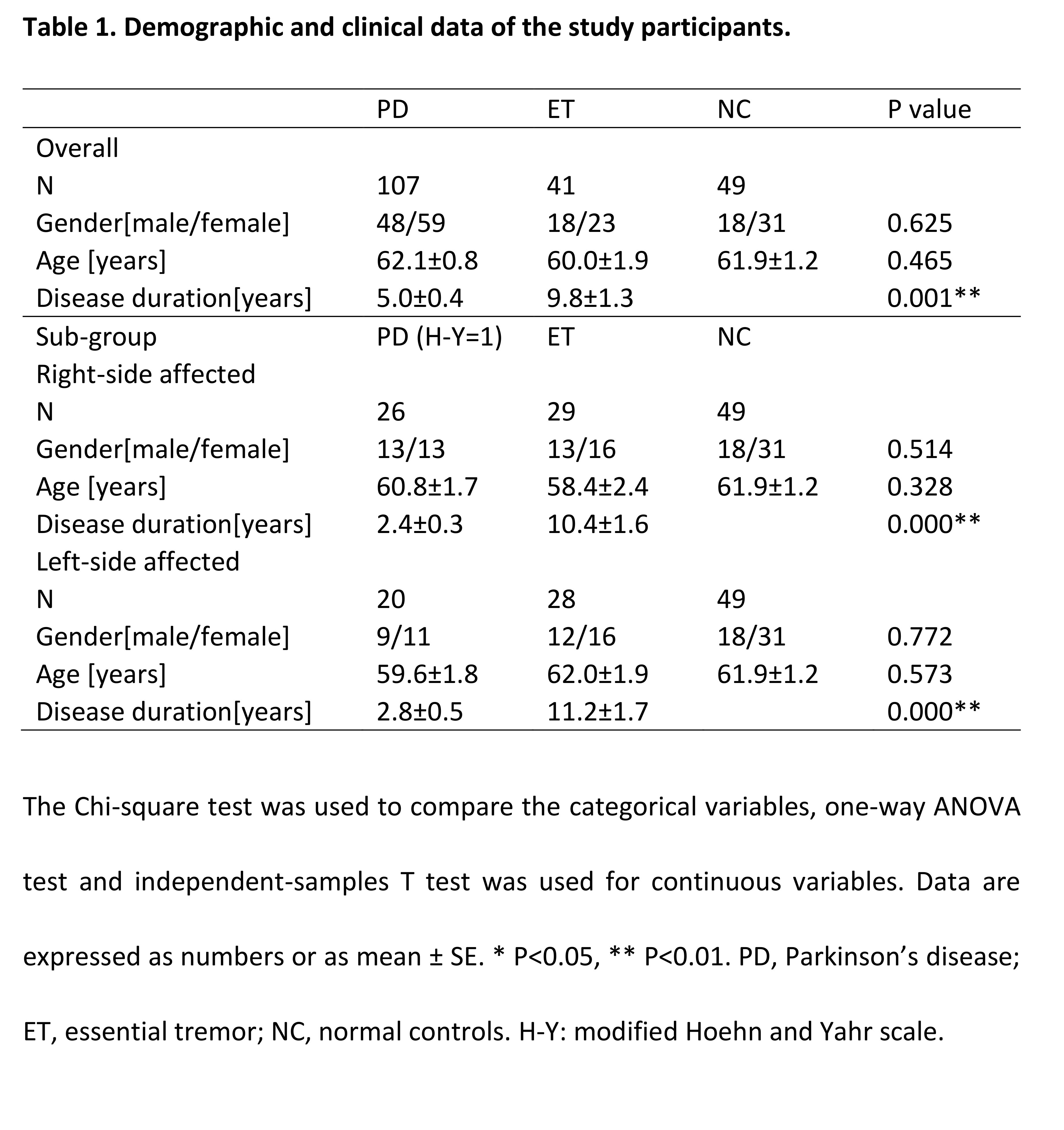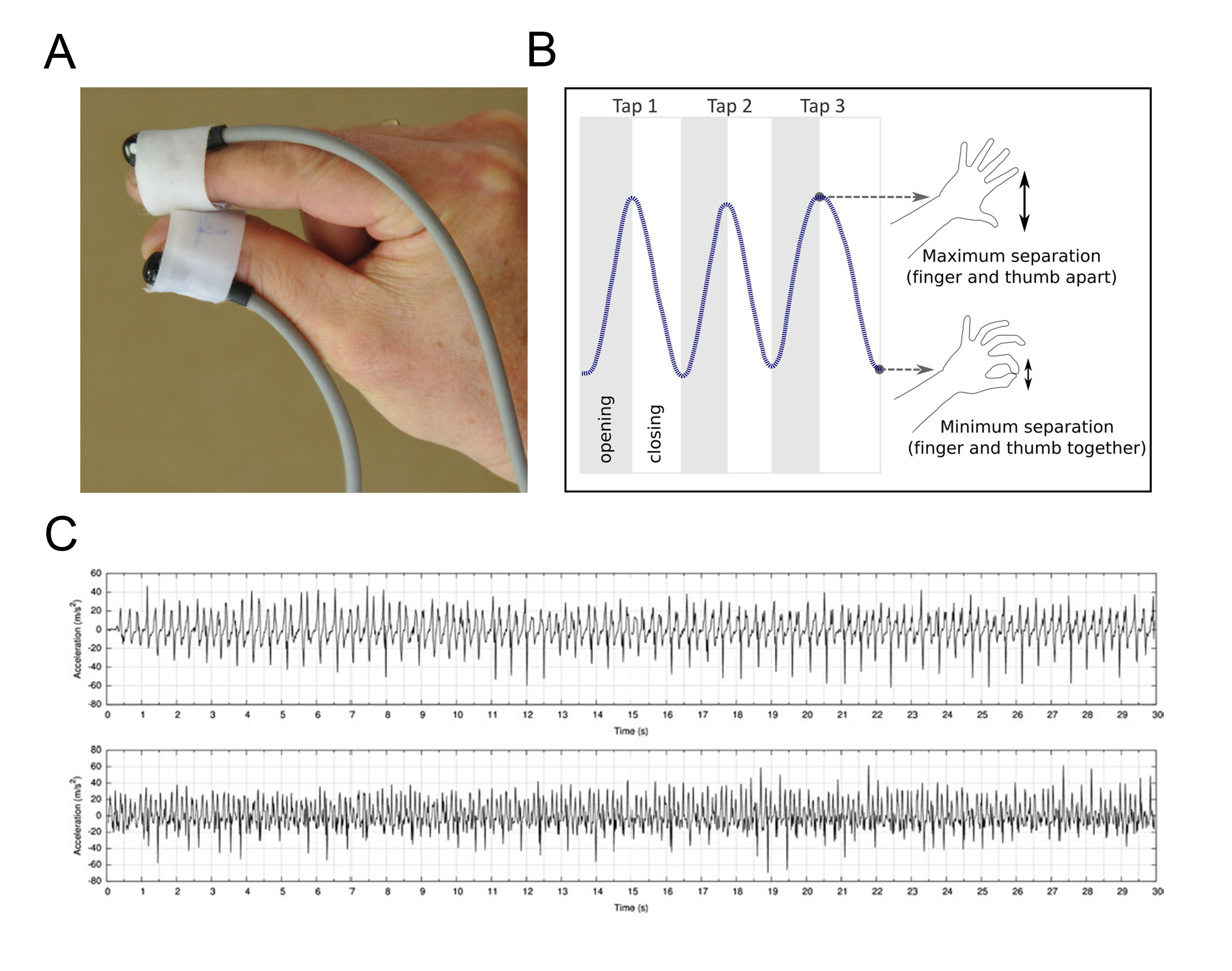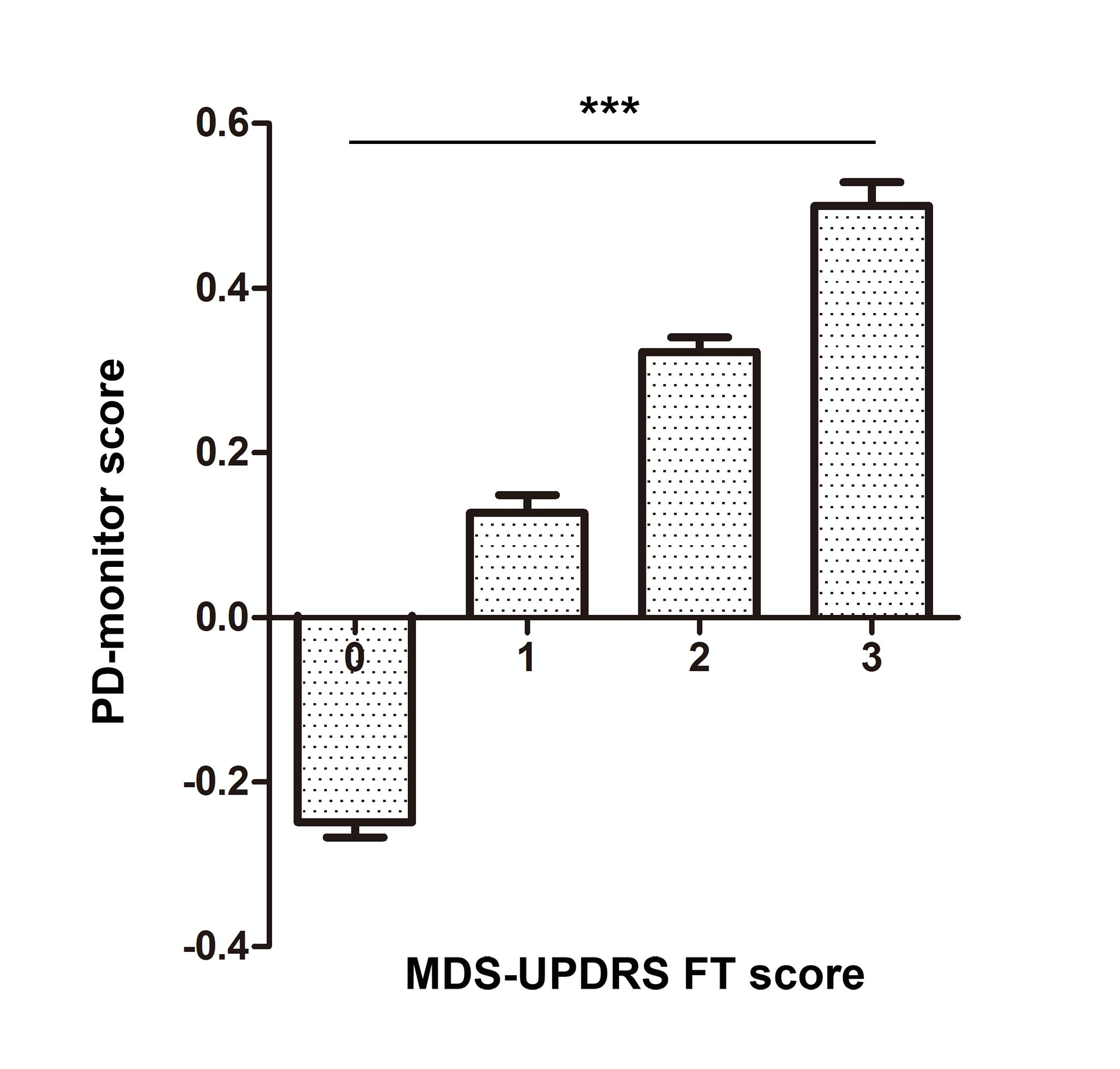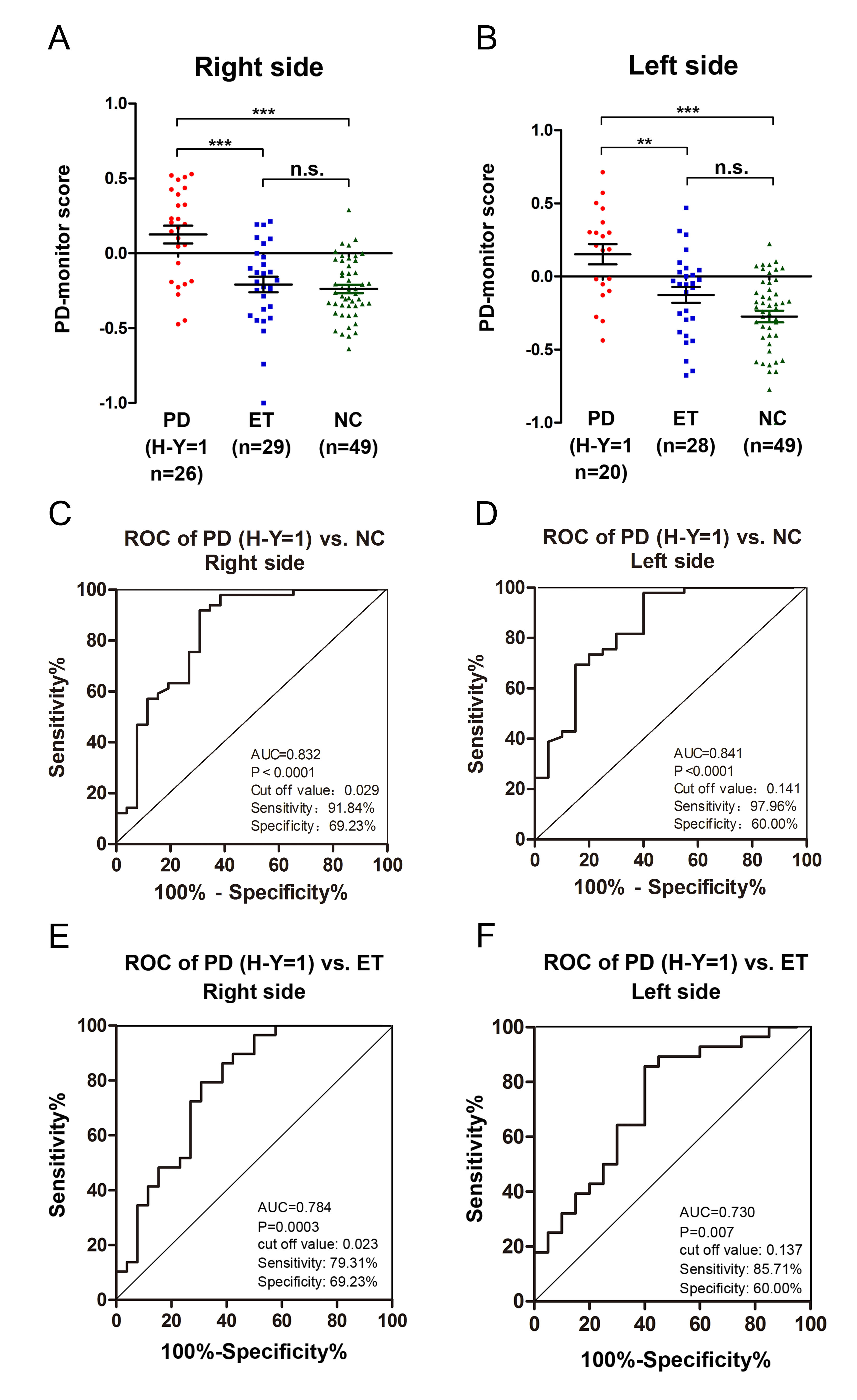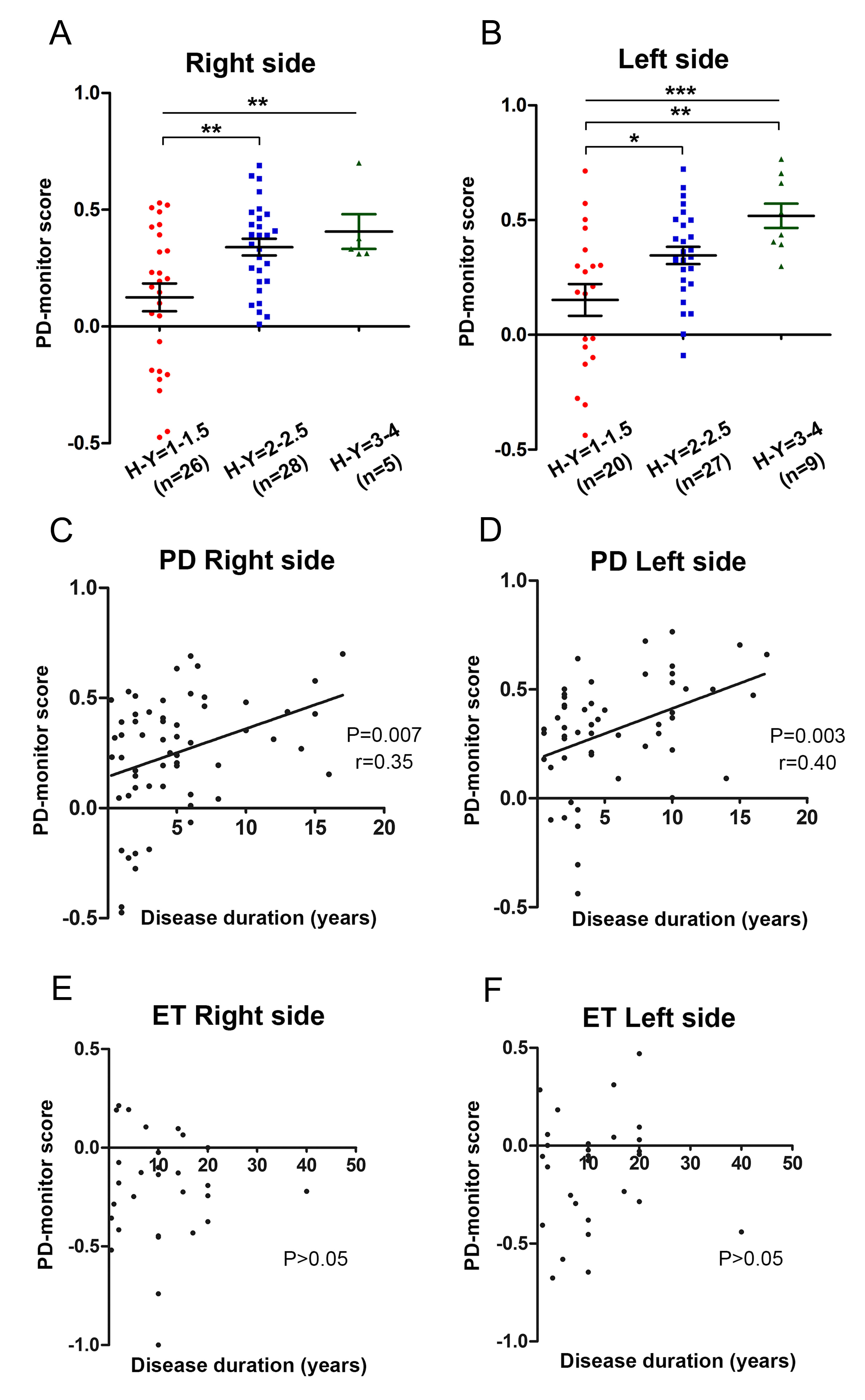Session Information
Date: Sunday, October 7, 2018
Session Title: Technology
Session Time: 1:45pm-3:15pm
Location: Hall 3FG
Objective: The aim of this study was to a) validate the ability of the evolutionary algorithms to distinguish PD patients in the early stage of disease from normal controls (NC) and essential tremor (ET) patients in a Chinese cohort, and b) examine whether the evolutionary algorithms could be used to assess disease severity as measured using the modified Hoehn and Yahr scale.
Background: Bradykinesia is the prerequisite for PD diagnosis according to MDS diagnostic criteria, and so accurate identification of bradykinesia is important. Based on MDS-UPDRS, bradykinesia can be evaluated by a neurologists’ subjective judgment of several tasks-finger tapping (FT), hand movements, pronation/supination movements, toe-tapping and foot tapping. Unfortunately, bradykinesia-related items have the lowest reliability among all UPDRS items, particularly when the severity is slight or mild. Therefore, there is an important need for developing objective, effective and convenient measurements to help clinicians accurately identify bradykinesia, which could potentially lead to earlier diagnosis of PD.
Methods: 107 PD, 41 ET patients, and 49 NC were included (Table1). Participants performed FT task with two sensors at thumb and index finger(Figure1). Readings from the sensors are transmitted to a tablet device and then analyzed by specialist software employing evolutionary algorithms. During FT tasks, the bradykinesia was rated using MDS-UPDRS 3.4.
Results: A positive correlation was found by comparing the PD-monitor score with MDS-UPDRS FT subjective grade (p<0.001)(Figure2). PD-monitor score was significantly higher in early PD patients (H-Y=1) compared with NC (p<0.001). The ROC curves illustrated strong separation, with an AUC of 0.832 (p<0.0001) and AUC of 0.841 (p<0.0001) for the right and left affected side, though 21.7% PD patients manifested very slight bradykinesia with MDS-UPDRS FT scored zero. The ROC curve also reflected a separation between the early PD and ET (p<0.01)(Figure3). Moreover, the PD-monitor score gradually increased as H-Y stage increased. Correlation analysis showed the PD-monitor score was significantly positively correlated with disease duration of PD patients(Figure4).
Conclusions: A simple device employing classifiers derived from evolutionary algorithms can be used to accurately measure bradykinesia in PD. The device has the potential to make the early diagnosis of PD and monitor disease progression.
References: 1. Michael A. Lones, S.M., IEEE, Stephen L. Smith, Member, IEEE, Jane E. Alty, and G.S.M. Stuart E. Lacy, IEEE, Katherine L. Possin, D. R. Stuart Jamieson, and Andy M. Tyrrell, Senior Member, IEEE, Evolving Classifiers to Recognize the Movement Characteristics of Parkinson’s Disease Patients. IEEE TRANSACTIONS ON EVOLUTIONARY COMPUTATION, 2014. 18. 2. Heldman, D.A., et al., The modified bradykinesia rating scale for Parkinson’s disease: reliability and comparison with kinematic measures. Mov Disord, 2011. 26(10): p. 1859-63.
To cite this abstract in AMA style:
C. Gao, S. Smith, M. Lones, S. Jamieson, J. Alty, J. Cosgrove, P. Zhang, J. Liu, Y. Chen, J. Du, S. Cui, H. Zhou, S. Chen. Bradykinesia assessment using evolutionary algorithms in Parkinson’s disease: Clinical validation [abstract]. Mov Disord. 2018; 33 (suppl 2). https://www.mdsabstracts.org/abstract/bradykinesia-assessment-using-evolutionary-algorithms-in-parkinsons-disease-clinical-validation/. Accessed January 7, 2026.« Back to 2018 International Congress
MDS Abstracts - https://www.mdsabstracts.org/abstract/bradykinesia-assessment-using-evolutionary-algorithms-in-parkinsons-disease-clinical-validation/

